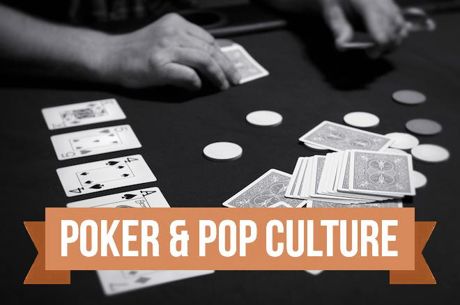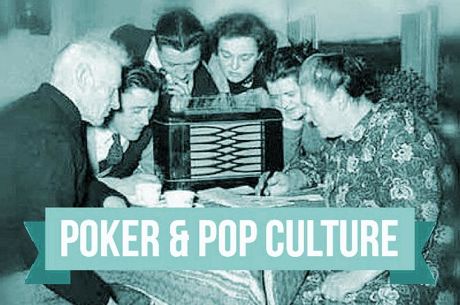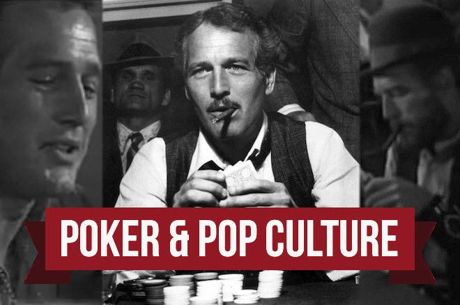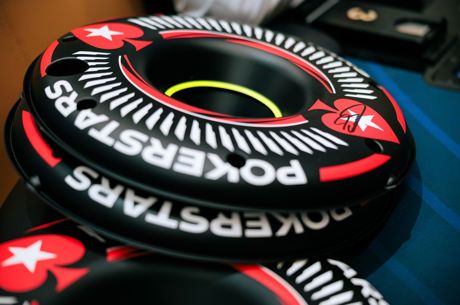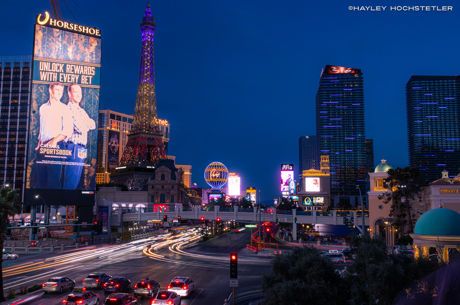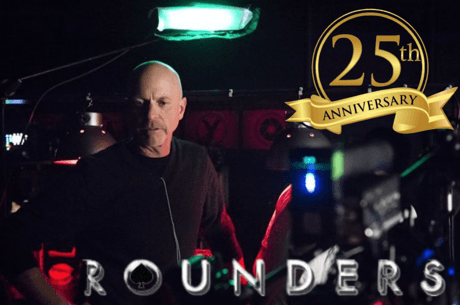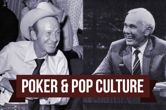Poker & Pop Culture: Going to California to Study 'Poker Faces'
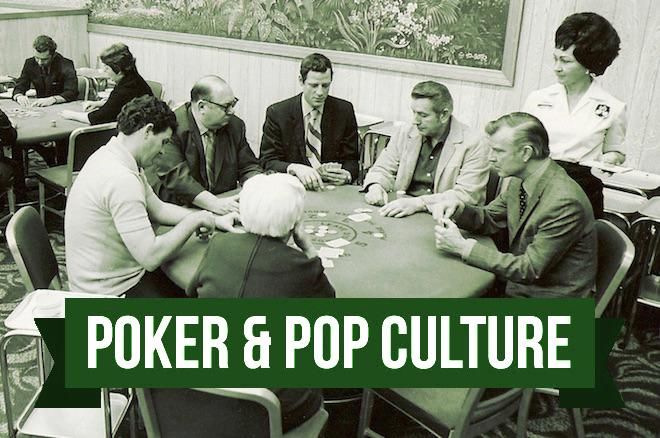
When considering the story of poker in the United States during the 20th century, most logically think of places like Texas or Las Vegas or (later) Atlantic City as the settings for the game's most memorable and far-reaching moments. But for several decades there was another stopping place sought by the game's most ardent players, one located nearly three hundred miles southwest of Sin City.
From the late 1930s all the way through the 1970s and after, the poker clubs of Gardena, California were firmly within many poker players' sights. For the next three installments of Poker & Pop Culture, we'll train our focus on those clubs as well, doing so through three different lenses.
First — after a short historical intro — we'll look at the clubs through the eyes of an anthropologist performing one of the more thorough examinations of a poker subculture anyone has ever done. Then we'll discuss a fictional cinematic recreation of California poker, circa the 1970s. Finally we'll discuss a brand new documentary about the Gardena rooms that will help us fill in more details of their fascinating story.
Games in Gardena
Gardena's emergence as a foremost draw poker destination started with a curious bit of legislative legerdemain.
Poker made it out west and just about everywhere else in the United States during the 19th century. We've covered before the story of gold-seekers in California during the mid-1800s also enjoying the rush of cards as well as some of the early reporting on those games. By century's end, however, the state's lawmakers were less enthused about poker's popularity, and set about outlawing nearly all forms of gambling.
In 1891 a new prohibition listed all of the prohibited card games, though failed to include draw poker among the forbidden variants. A little later in 1911, the state's attorney general Ulysses S. Webb gave an opinion on the matter that specifically described draw poker as a "game of science" and thus not covered by the anti-gambling law. That helped draw poker continue to remain a favored card game in the state.
Eventually Ernest "Ernie" Primm — a central figure in the history of Gardena poker — decided to open a card club of his own. On June 2, 1937 four men were at his club playing draw poker when they were arrested, and that led to a court case in which Attorney General Webb had to rule once more on the matter. Again he fell on the side of exempting draw poker as a skill game, clarifying further that card rooms were okay as long as the players played each other (not the house) and the room didn't claim part of the winnings, though they could charge players' "rent" for time spent at the tables.
Also in Webb's ruling was the provision that the community had to be okay with the card rooms. And Gardena was.
Soon Primm opened a new card club in Gardena. More quickly followed, and eventually a half-dozen of them would emerge as the most enduring and popular — the Monterey, Embassy, Rainbow, Normandie, Gardena and Horseshoe.
We'll talk more about the colorful history of these clubs' growth and development. Today, though, let's skip ahead to the early 1980s when a Ph.D. in anthropology decided to conduct a thorough analysis of the thriving, unique culture that over the ensuring decades would grow up around those California card tables.
Examining Poker Players in Their Natural Habitat
David Hayano's 1982 book Poker Faces: The Life and Work of Professional Card Players is different from just about any other poker book you're going to come across. That's because unlike most other poker-related narratives that highlight the game's history and/or most famous characters, Poker Faces is a scholarly work written according to the standards and criteria of serious academic inquiry.
Hayano earned a doctorate in anthropology from UCLA during the 1970s, his dissertation focusing on the Awa and Gimi people of Papua New Guinea. He then took a position at CSU-Northridge, at which point he started work on his next study, this time focusing primarily on the card rooms of Los Angeles county — including those in Gardena — and the behaviors of those who frequented them.
Using many of the same methods of data gathering he employed when studying the isolated Papuan tribes, Hayano meticulously examined the "world" of poker players of that time and place, drawing numerous conclusions about their makeup and about the "social mechanics of face-to-face confrontation" that characterized their existence.
However, as Hayano explains in the Preface, there was one big methodological difference between this new study and his earlier one. Whereas he might've been able to remain situated outside the "world" of the Papuans in order to observe them, Hayano recognized the need to join the poker games if he hoped to learn anything worthwhile about the subjects of his study.
"Poker... is not a spectator sport," explains Hayano (an idea contradicted a couple of decades later once the hole-card camera came along). "The real action in poker is concealed.... The observable movements of chips wagered and cards dealt do very little to reveal the genuine heart of the game."
As anyone who has ever watched a live poker game well knows, there is a great deal that happens at the table that simply cannot be fully understood from even just a few feet away. And so, in order to get a better idea of the "deep, invisible structures" present in the social interaction of the players, Hayano took a seat at the tables himself in order to improve his perspective.
Reading Poker Faces
There's another interesting side note in that Preface worth sharing. Hayano explains that even just a few years earlier "this study of professional poker players might have been situated more appropriately in the sociology of deviance." The very fact that someone could conduct a serious academic inquiry of poker in the early 1980s "reflects a change both in our society [with regard to its attitude toward gambling and/or poker] and in social science."
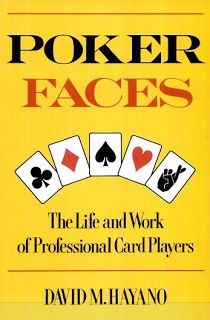
During the first part of the book Hayano spends time sketching the scene in the card rooms as he experienced it, focusing in particular on describing the lives of the players and the "social organization" or hierarchy among them. He's especially interested in the regulars, and with a lot of disclaimers ends up offering a thorough typology of different kinds of "professionals."
Hayano admits he employs the term "professionals" a bit loosely, pointing out that in fact many of those whom he's describing would not call themselves or each other "pros," but would rather use terms like "hustler, player, rounder, or no special title at all."
To be precise, Hayano means "professional" in a generic sense to refer to anyone who could be regarded as a regular inhabitant of a given card room (i.e., not a tourist or occasional visitor). He divides these players into "worker professionals," "outside-supported professionals," "subsistence professionals" and "career professionals."
The first two groups have other jobs which sustain them, with poker essentially being a more or less serious hobby for them and profiting at the game not at all crucial.
Meanwhile the "subsistence" pros derive their primary income from poker, yet still don't have "any firm emotional, self-identificational, or social commitments to full-time poker-playing." Finally the "career" pros both depend on poker entirely for their livelihood and have made that personal commitment to poker as their chosen "skillful trade."
The book then goes on to offer some genuinely insightful observations about the various challenges these "professional" players routinely experience, including handling (or "controlling") luck, dealing with winning and losing, satisfying the need for action and more.
Searching for Meaning, One Hand at a Time
There's a lot else to recommend about Poker Faces. Even though Hayano's commentary is rooted in the era, many of his observations still apply in many ways to today's "grinders." I'll cut the summary short, though, and just share a couple more of the author's observations from the book's interesting conclusion, titled "The Existential Game."
Recognizing "the relentless instability and uncertainty of day-to-day gambling" experienced by the players he studies, Hayano explains that as a result many of them are constantly forced to reevaluate what they are doing and its significance and meaning.
"If the life of the professional poker player were comfortable and predictable," he writes, "I do not think that such extensive and persistent self-reflection would be required." In other words, the game's "variance" not only affects players' bankrolls, but their sense of self, too.
It is interesting to consider how "professional" poker players — a group which for Hayano includes just about anybody who plays a lot and for whom the game is an important part of their lives — are as a group an especially self-reflective bunch. Hayano pursues the point further, noting that one of the things that poker pros find themselves thinking about a lot is whether or not their lives have any special meaning at all.
"Many people, including poker players themselves, do not see card-playing as particularly productive," notes Hayano, adding how this attitude adds to the difficulty (and to the "existential" worrying) of the life of the poker pro.
Also, for many full-time players, "there is no finality of gain and no peak existence, except perhaps winning a major tournament." The game just goes on and on and on, a situation that "manifests itself in an existential, if not socio-psychological, kind of imbalance."
Hayano refuses to cast judgment on the players, though, suggesting at the very end that "perhaps it is unfair to question the ultimate meaning of any individual's way of life." Of course, the point he's just made is that for many pros that is exactly what they themselves are doing all the time — namely, the questioning the meaning of their lives.
Not Just a Game, But a World Unto Itself
The last observation I wanted to share from Hayano's book is just to note how he ultimately views the society of poker players, circa the late 1970s-early 1980s, as a closed-off, isolated "world" not unlike that of the remote peoples he previously studied in Papua New Guinea. This is an idea that also comes up in a 1967 article by Dick Miles about California poker players discussed here before, the title of which suggests the connection: "Lowball in a Time Capsule."
Says Hayano, "In contrast to the Old West and riverboat gamblers, most professional gamblers today operate in a completely distinct social and legal environment."
In other words, while the games of old (in saloons and on steamboats) might have encouraged a lot of interaction between regular players and "normal" folks, these games he's watching and participating in are different. It's a mostly closed-off society he finds himself in when playing in those games, "an abstruse, technical 'small-life world'" that operates mostly independently of the larger one the rest of us occupy.
In some ways this last observation about the "completely distinct social and legal environment" in which poker players once operated has changed a lot since 1982 — especially since the "boom" of the 2000s that introduced poker to a much larger and more varied population.
Even so, most of us who've played poker at all seriously well know how immersive it can be, making it easy (if we wish) to shut out everything else.
After that academic excursion, we'll continue next week with more from the California poker rooms, starting with one of the best poker scenes ever filmed — one taking place in the fictional-yet-oh-so-real "California Club."
From the forthcoming "Poker & Pop Culture: Telling the Story of America's Favorite Card Game." Martin Harris teaches a course in "Poker in American Film and Culture" in the American Studies program at UNC-Charlotte.
Photo: "A 'Chip Girl' on Duty at the Gardena Club (early 1970s), Freeway City.

